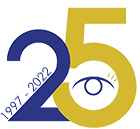Amblyopia
Amblyopia Diagnosis & Treatment
Amblyopia, also known as “lazy eye,” is decreased vision in one or both eyes due to abnormal development of vision in infancy or childhood. In amblyopia, there may not be an obvious problem of the eye. Vision loss occurs because nerve pathways between the brain and the eye aren’t properly stimulated. The brain “learns” to see only blurry images with the amblyopic eye even when glasses are used. As a result, the brain favors one eye, usually due to poor vision in the other eye. It is the leading cause of vision loss in children.
Causes of Amblyopia
Common causes are astigmatism (abnormal shape of the eye), strabismus (abnormal alignment and tracking), and cataracts (cloudy lens of the eye).
Amblyopia Treatment
In order for vision to develop to its full potential, we start glasses earlier than in previous generations. The brain receives a sharp focus and vision develops more clearly. This also can prevent the need for eye patching. In cases where the vision has not developed to 20/20, a child may need to wear an eye patch for several hours a day over the strong eye to allow the weaker eye to develop a better connection with the brain.
Patching is not a substitute for glasses. Glasses are often started first to correct the abnormal focusing of the eyes.
Most of our patients being treated for amblyopia achieve 20/40 vision or better following treatment.
Learn more about Pediatric Amblyopia: AAPOS – Amblyopia

